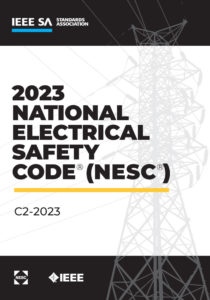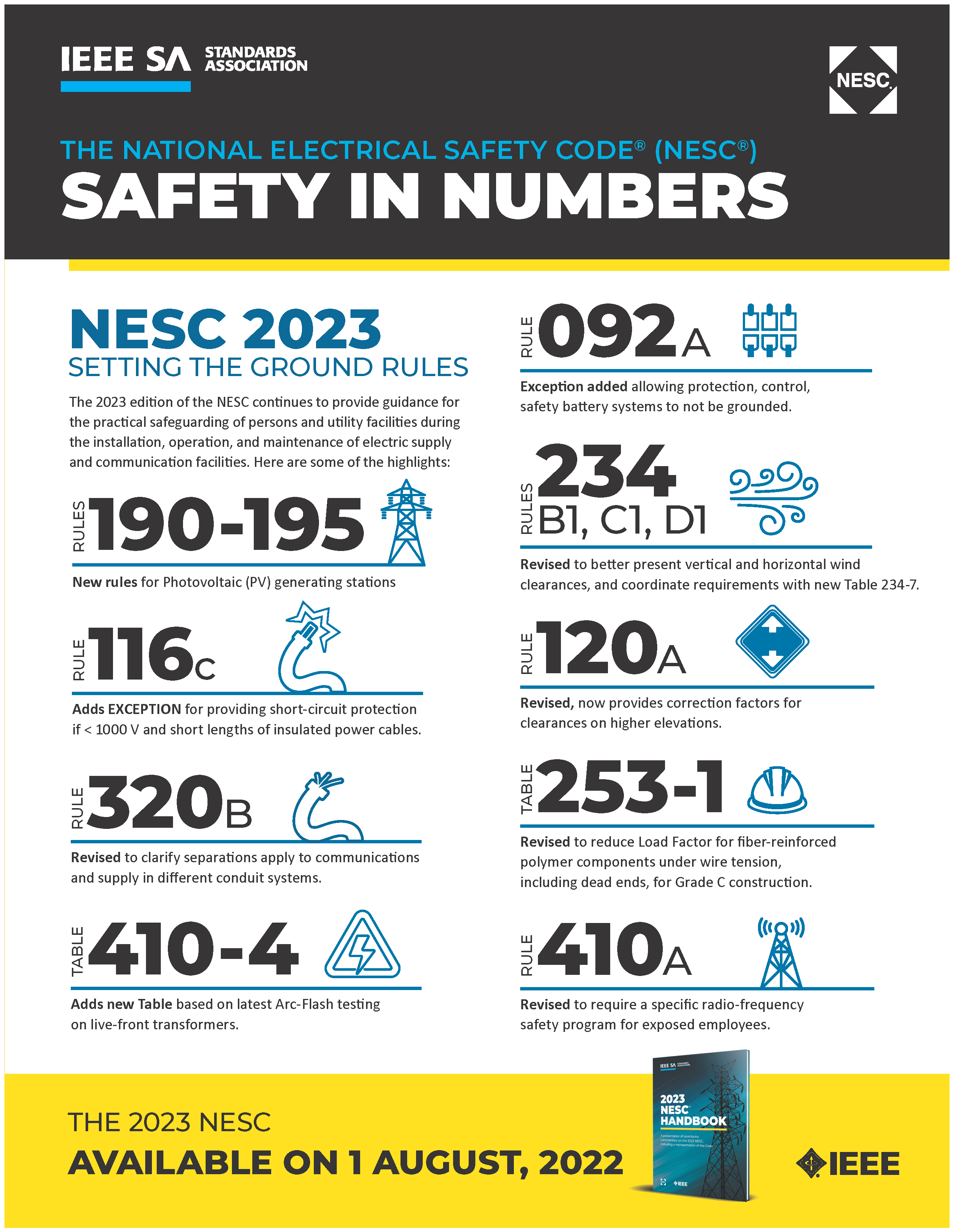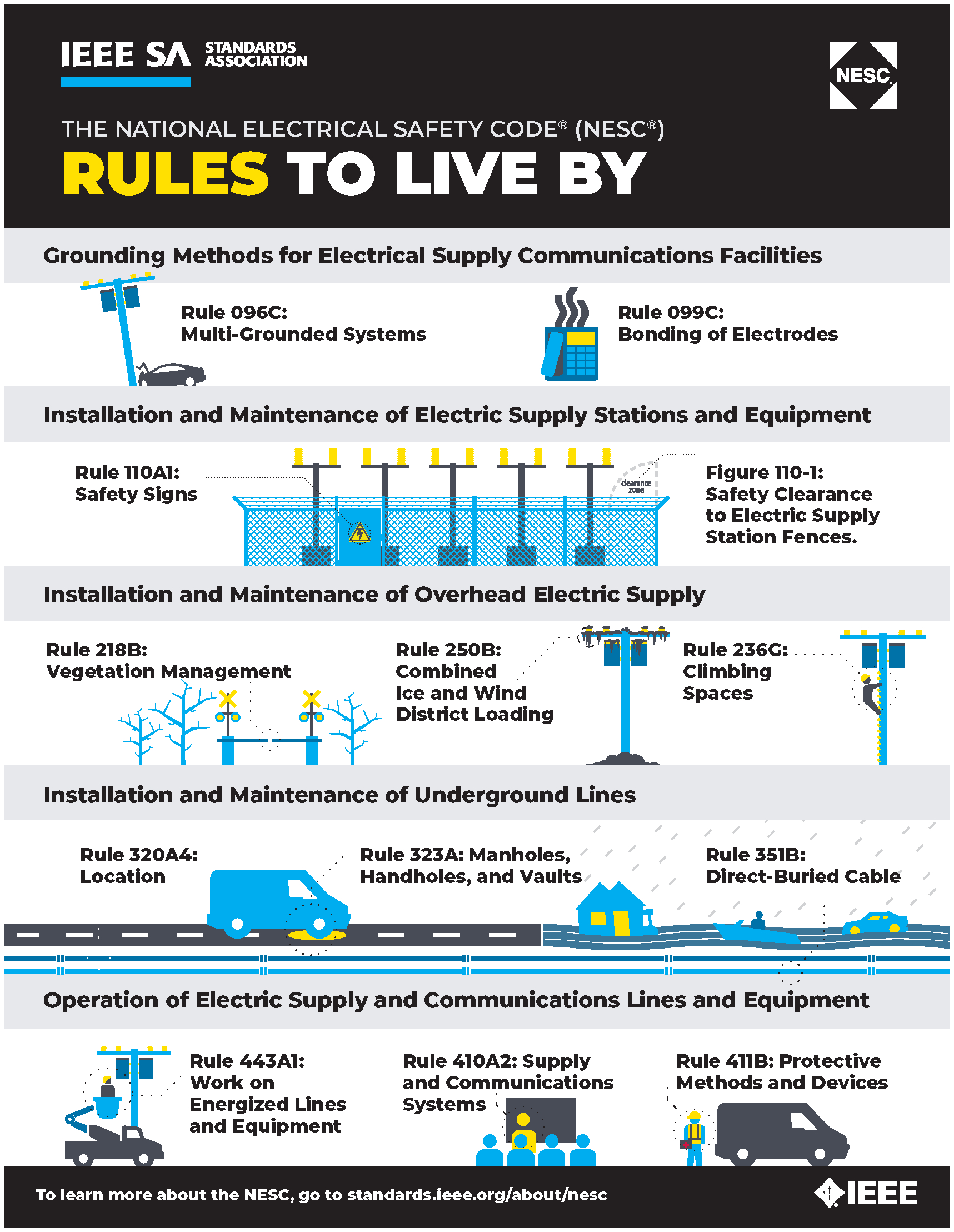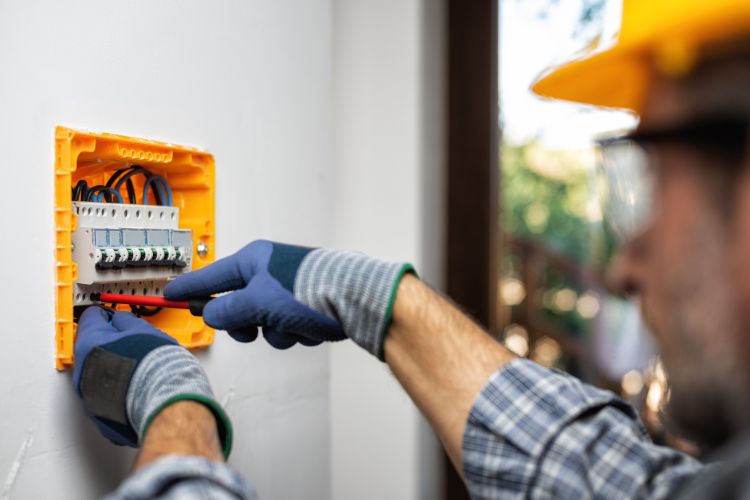Standards make the world go around—safely. While not every “standard” is binding, safety versions are more likely to be adhered to than others. No one wants to jeopardize their safety by ignoring best practices. As industries change and evolve, so too must standards and the organizations that create and update standards take that into consideration.

IEEE, the world’s largest technical professional organization, and the IEEE SA (IEEE Standards Assn.) released the 2023 NESC (National Electrical Safety Code) in August 2022. Published by IEEE SA and typically updated every five years to stay current with changes in the industry and technology, the NESC specifies best practices for the safety of electric supply and communication utility systems at both public and private utilities.
NESC sets the ground rules and guidelines for practical safeguarding of workers and the public during the installation, operation, or maintenance of power, telephone, cable TV, and railroad signal systems. Just as it has done for more than a century, the NESC is continuously evolving and being refined to embrace new technologies for a more sustainable future.
The potential impacts of recent and emerging technologies are reflected in the new Code. Notable changes to the 2023 NESC include:
- Significant revisions were made in Section 14 covering batteries, addressing new battery technologies, energy storage, and backup power.
- A new Section 19 for photovoltaic generating stations addresses general codes, location, grounding configurations, vegetation management, DC overcurrent protection, and DC conductors. These new rules accommodate large-scale solar power projects.
- All stand-alone tables for metric measurements have been removed from the main code body and moved to Annex 1. For tables that include both English and metric values, the revised Code presents numerical values in the customary “inch-foot-pound” system first and the corresponding metric values following in parentheses to help prevent misreading errors.
- In the Clearances section, as well as in the specification of the Grade of Construction, the Code further clarifies the use of non-hazardous fiber optic cables.
In line with the determination to address emerging technologies as well as established ones, the 2023 NESC includes updates throughout that impact many electrical and communications installers. Many of the changes address emerging technologies such as solar and wind energy, distributed energy/microgrids, batteries and energy storage, and wireless small cell networks.

Like previous versions, the 2023 edition will be available in digital, printed, e-learning, and mobile-app formats. This edition consists of initial sections covering scope, purpose, and grounding methods, followed by sections that include specific rules for electric supply stations, overhead lines, underground lines, and safety-related work practices.

A companion document, the 2023 NESC Handbook, is available with the Code. The Handbook includes all of the rules of the Code but also provides insights and commentary on the rules and how to apply them from the experts who helped develop the Code, including historical footnotes to provide context for Code revisions and additions.
Want to tweet about this article? Use hashtags #construction #sustainability #infrastructure #futureofwork


